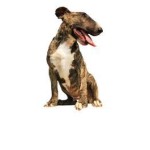If you are experiencing dog allergies, and your dog’s skin is itchy, red, and sore, you can easily find a solution by feeding food that does not offer one main ingredient : Corn. Dog allergies can result in a large amount of symptoms, but the main problem that you will experience is a lack of a resolution to these symptoms. The problem is that often dog allergies are related to nutritional levels, and a lack of good nutrition.
The Dog Food Industry and Dog Allergies
The dog food industry began in the 1940s with Purina’s invention of Dog Chow. The company began to create all kinds of animal and husbandry food for farmers, and when farmers started buying the food, it was great food for dogs. The food was often dried protein based food, that was the scrap or end points of the meat industry. The best part of this kind of food was that corn was not the main part of the food, but just a stabilizer. Today, we have many people researching how to treat dog allergies, but the reason is the problem is growing is there is more and more dog food that has moved from nutrition. The dog food that a majority of dogs are fed, has a key ingredient that supports a long shelf life, and is inexpensive. This ingredient is corn, and it is not the same corn as a hundred years ago. The kernel is mostly starch now, and is a white fluffy sugar that can be easily dried and mixed with a small amount of protein for consumption.
The corn addition has added great profit for the dog food industry. Dog food mixed with only a small fraction of protein, needs a stabilizer, and corn is the most inexpensive option. Most grocery and big box super food stores offer only dog food that is shelf life resistant for 2 or 3 years. It is important that they purchase large palates of the food, and then that they stay on the shelf until purchase, and stay fresh. The problem with this idea, is that the vitamins and minerals that may have existed at the time of manufacture actually are now inert. The vitamins and minerals do not last for the time frame that corn lasts, and the protein in this shelf stable product, is actually oxidized easily over a few months, which is a perfect storm to create dog allergies.
Dog Allergies can Be Solved with Nutrition
Buy a dog food that has a short shelf life, and one that has no corn, and your dog will find that dog allergies are a thing of the past. The nutrition solution can be the real solution, but it takes time to see the results. Over a dog’s life, eating bad and shelf stable dog food, can offer some solutions for stores to see a profit, but it creates a really toxic situation in your dog’s cells and tissues. When you offer new nutrition, and remove the corn based food, you are going to see a change in your dog, and sometimes the dog allergies will actually get worse. This is really common, and do not stop your new dog food regime.
Dog Allergies can Get Worse With Good Nutrition
The reason your dog may see better nutrition cause more dog allergies, is the fact that your dog’s body will now release all the toxic elements that it was storing over the years. Often when a new nutrition is offered, new vitamins and minerals will be so welcome to your dog’s system, that it releases all the stored meager value it was storing for a rainy day, and this release, will send out toxic stored chemicals as well. It is not unusual for a few months of dog allergies to erupt during a new nutrition program.


